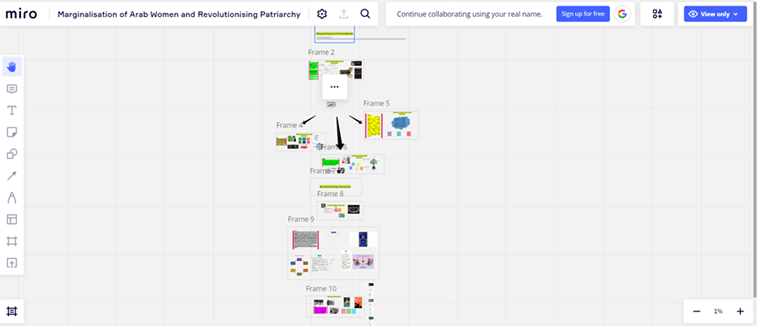The Use of Miro in Teaching Practice
DOI:
https://doi.org/10.31273/eirj.v10i3.1277Keywords:
Miro, software, digital tool, teaching, online collaboration whiteboard, COVID-19Abstract
The COVID-19 pandemic has hugely affected our lives, including the daily work of university students and teachers. However, such difficulties can emerge as drivers for change to discover new pedagogical possibilities. Miro is a tool which can help students and teachers cope with the challenges faced during the ongoing COVID-19 pandemic. In this critical reflection, I will explore my experience of using Miro in a digital project created on the website of the Faculty of Arts at the University of Warwick in 2022. The major aim behind this reflection is to show how Miro can be used as a novel way of engaging with students in a physical classroom or virtual spaces. The article discusses using the versatile digital platform Miro as a pedagogical tool for motivating students’ creativity in composition or literature classrooms. The key question that my reflection seeks to answer is ‘how can teachers use Miro to increase student engagement and consequently adapt to the modern and post-pandemic needs of education?’ It is expected that this reflection will deepen both teachers’ and students’ knowledge of Miro as well as provide teachers with a new tool and method for online teaching.
Downloads

Downloads
Published
Issue
Section
License
Copyright (c) 2023 Raad Khair Allah

This work is licensed under a Creative Commons Attribution 4.0 International License.
Authors who publish with this journal agree to the following terms:
Authors retain copyright and grant the journal right of first publication with the work simultaneously licensed under a Creative Commons Attribution License (CC-BY), which permits use and redistribution of the work provided that the original author and source are credited, a link to the license is included, and an indication of changes which were made. Third-party users may not apply legal terms or technological measures to the published article which legally restrict others from doing anything the license permits.
If accepted for publication authors’ work will be made open access and distributed under a Creative Commons Attribution (CC-BY) license unless previously agreed with Exchanges’ Editor-in-Chief prior to submission.
Authors are able to enter into separate, additional contractual arrangements for the non-exclusive distribution of the journal's published version of the work (e.g., post it to an institutional repository or publish it in a book), with an acknowledgement of its initial publication in this journal.
Authors are permitted and encouraged to post their work online (e.g., in institutional repositories or on their website) prior to and during the submission process, as it can lead to productive exchanges, as well as earlier and greater citation of published work. (see: The Effect of Open Access)
